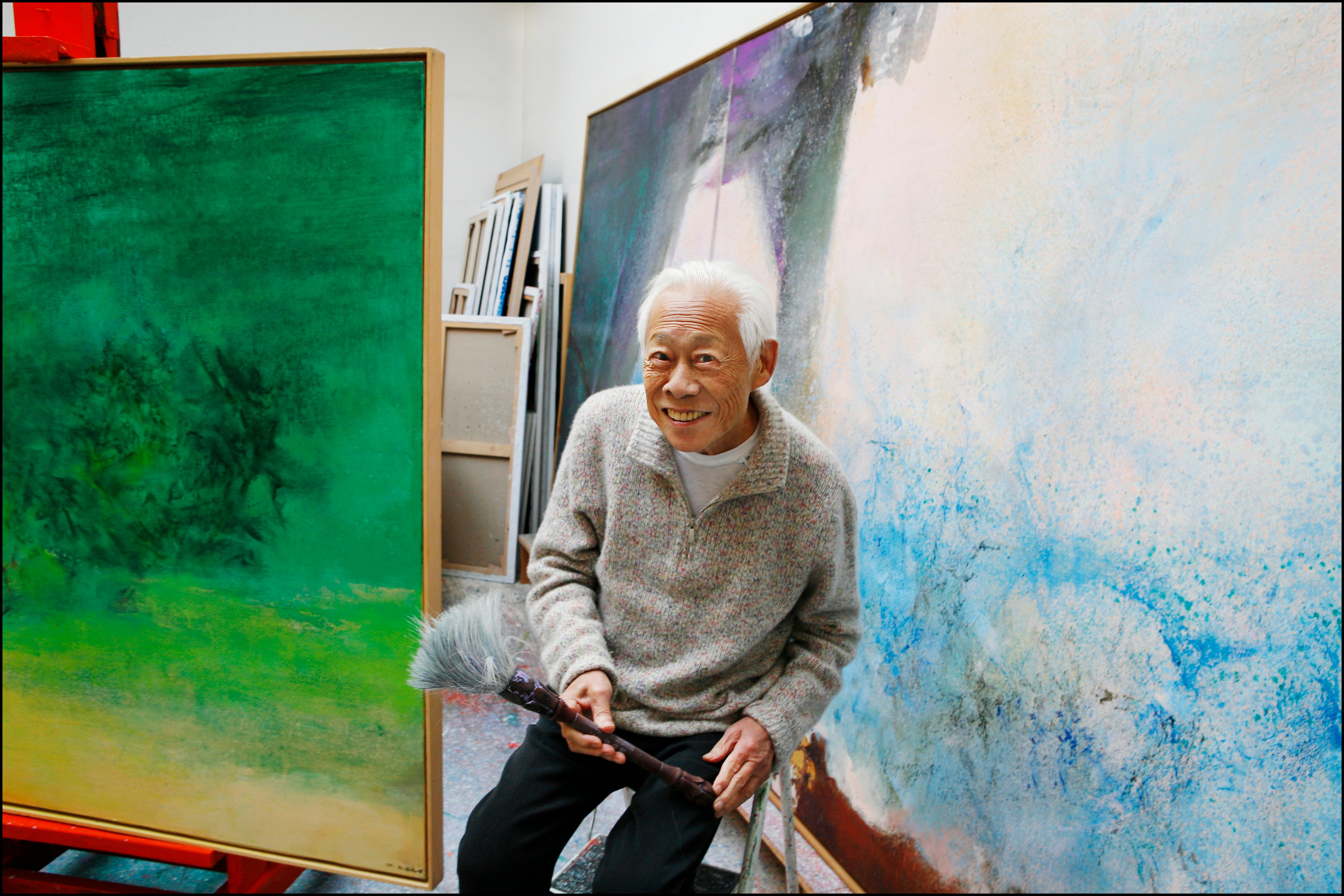
The French countryside studio where Zao Wou-Ki (1921–2013) painted some of his largest abstract works will be transformed into an art gallery and artists’ residency.
Villepin, the Hong Kong art gallery cofounded by Dominique de Villepin, the former Prime Minister of France, and his son, Arthur, has acquired the 10,700-square-foot mansion in Gaudigny, France, that Zao lived in with his wife, Françoise Marquet, from the 1970s until his death in 2013.
Zao Wou-Ki’s studio in Gaudigny, France. Courtesy of Villepin Gallery.
The 15th-century mansion comprises several buildings, including a 4,300-square-foot studio. Once renovations are completed, which organizers say should happen in the next three years, the gallery will host exhibitions, events, and artists in residence.
“Zao Wou-Ki was a family friend,” Arthur de Villepin told Artnet News. “When we promote an artist, we do it for the long term. We want to be able to work on the whole spectrum of what it means to promote an artist. It’s much more in-depth than just selling paintings.”
Arthur de Villepin, who celebrated his 16th birthday at the Gaudigny house with his family and Zao, said the space represented the philosophy of the last artist, who traveled to the West from China and brought different cultures together into his work.
Zao Wou-Ki, Juin—Octobre 1985 (1985). Photo courtesy of Sotheby’s.
Zao created some of his large-scale triptychs, including the monumental Juin—Octobre 1985 (1985), which was sold for $65 million at Sotheby’s Hong Kong in 2018, at the house. The record-breaking work was commissioned by his friend, the Pritzker Prize-winning architect I.M. Pei.
Villepin said much of the house still remains the same as it was, decorated with old photographs and papers. He is currently in discussions with various architects about how to renovate the space.
The home will be open to an invite-only group of artists, curators, and collectors before parts of it are opened to the wider public.
“We want to bridge the gap between his legacy and his memories with the new generation,” Villepin said.
Villepin’s Hong Kong gallery is currently showcasing the exhibition “Zao Wou-Ki: The Eternal Return to China” until May 22, and is hoping to stage exhibitions of the artist’s work in mainland China, Hong Kong, Singapore, South Korea, and Japan.